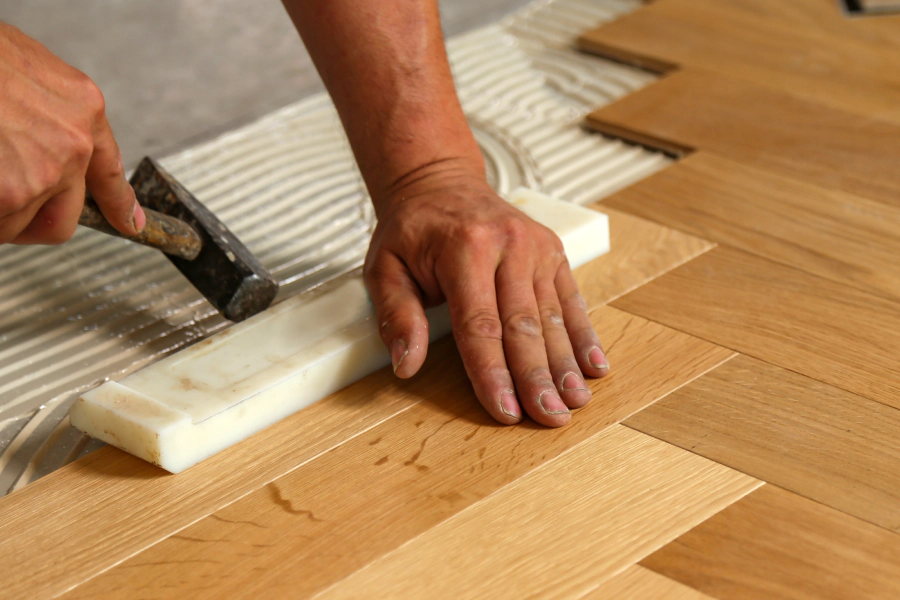
Sometimes, we want to indulge our creativity and use several colors of wood for our floor. While it makes perfect sense to use only one hardwood design, you must know that design has no boundaries, and it is entirely alright to use different hardwood floors together. Case in point: dark wood is excellent for big rooms, but light wood is best in small living spaces. In this case, you are mixing colors to compensate for the small room.
Though it may seem unnatural to have different flooring color, it will prove otherwise if the color selection is right and if the transition from one color to another melds together. One must also consider the general appearance of the house’s interior design. The color of the floor and the wall must be similar or compensate each other.
Pick a Direction
If a door separates the two rooms whose hardwood floor you want to redo, different designs will work well even if the directions of the grains are not aligned. If the two places separate without doors, you need to install the hardwood in the same direction. Such as pattern is much more pleasing to the eye than the other way around.
If you are applying wood on stairs, the direction of the wood grain must also align to the direction at the first floor ,and this should continue to the second floor. Contrasting directions will look awkward to the eye.
Observe the Undertones
The colors of wood flooring do not need to be of the same hue if you are trying to mix. However, the wood colors must complement each other. Carefully assess the designs you want if they are warm or cool. There must be a contrast between these two to make the finished flooring beautifully crafted instead of looking like a hodgepodge of wood panels.
Ideally, the wood flooring must be of a darker color than the wall. It is not a good idea to have a light-colored flooring and dark walls because dark walls will absorb all the light.
Transition Between Rooms
Wood flooring must transition between rooms with a straight line, and this must occur at the border of the room. You can use a T-molding to make it neat. Regarding color, choose warm-colored wood for large places that do not typically receive a lot of sunlight. You can mix Brazilian cheery or redwood with orange and other red hues of hardwood. What this does is it creates a cozy atmosphere. Use light wood for small rooms with a high polish finish as this will help the light bounce off the floor, making the room seem bigger than what it is.
Mix and Match Patterns
If there is only one huge room which will have a hardwood floor, you can try mixing and matching patterns on how the hardwood is installed. The typical arrangement is that all the wood planks are parallel to each other. Such a design is the classic style of hardwood flooring but do not afraid to experiment.
You can try perpendicular shapes if you want, which will give an impression of squares, but this will require much more work. The design process is also elaborate, and you will need to select from multiple wood designs to get the right balance in a perpendicular pattern.
For a design like this, it is best to stay away from hardwood floors that have heavily pronounced grains. Choose wood that looks smooth with little grain, so they do not look odd when arranged perpendicularly. Remember, wood grains that run against each other is unnatural in appearance.
Thank you for reading our blog! How can we help you? Contact us today.